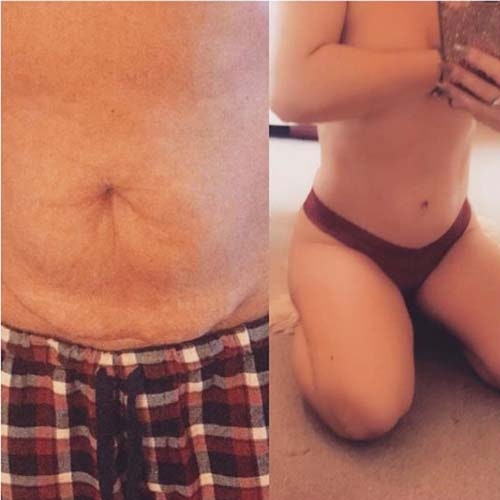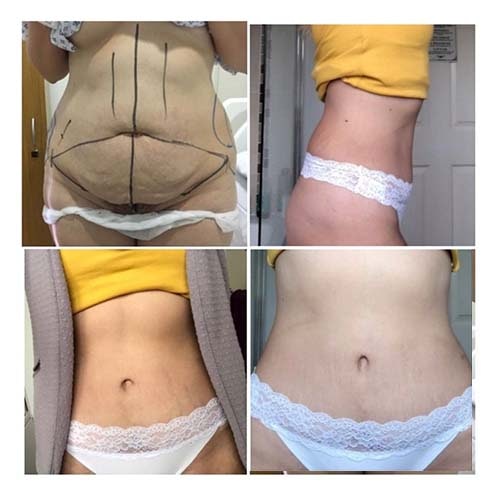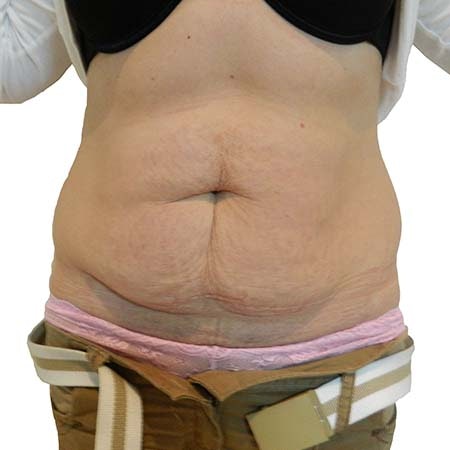What is a Tummy Tuck?
An abdominoplasty is a surgical procedure that removes excess skin, fat, unwanted scars, and stretch marks from the abdomen. Depending on the type of tummy tuck procedure, the surgeon may also tighten and repair the abdominal muscles to give a flatter appearance and improve the shape of the stomach and abdominal wall.
Weight loss, ageing, or multiple pregnancies can all contribute to weakened stomach muscles, excess fat, and loose skin. An abdominoplasty can help to improve the shape of the abdomen and can be a life-changing procedure for many patients, instilling confidence, and contributing to improved health and lifestyle.
How much does a Tummy Tuck cost?
Tummy Tuck prices start from £7,345. Click here for further information on Tummy Tuck costs.
Whether you would prefer to pay in full, utilise our finance offerings, pay with a credit card or take out a bank loan, MYA offer many different payment options to our patients to ensure funding a cosmetic surgery procedure is accessible to all. To learn more about our finance options, click here.
Tummy Tuck Procedure Overview
After a thorough assessment of BMI and suitability for tummy tuck surgery, the surgeon will recommend the best treatment plan and discuss the risks, limitations, and benefits of abdominoplasty surgery.
The procedure will be performed under general anaesthetic; this will be administered by inserting a needle into the back of your hand and it will take about 30 seconds for the anaesthetic to start taking effect. If you are worried about needles, speak to your MYA Nurse, who will inform the anaesthetist and hospital ahead of your admission.
Typically, the surgeon will make an incision across the lower abdomen (similar to a C-section). Depending on the type of tummy tuck you are undergoing, the surgeon may also make a vertical incision and/or an incision around the umbilicus (tummy button).
Any unwanted skin and fat will then be removed from the abdomen, before being stitched into place with dissolvable or non-dissolvable stitches.
The surgeon can also tighten and repair the stomach muscles, and if required, they will reposition the umbilicus (tummy button).
Dressings will then be applied along with a compression garment. The compression garment should be worn day and night (except when showering) for the period of time instructed by their surgeon, this will help to aid healing, reduce excess swelling, and help to prevent seromas (a build-up of fluid).
In some circumstances, the surgeon may decide the patient requires drains. The drains will remove any fluid that collects after the procedure and will be removed by a nurse prior to your discharge from hospital or by your nurse at one of our MYA clinical hubs.
Abdominoplasty can also be combined with other body contouring procedures such as liposuction (fat removal) to achieve the desired result.
Depending on the type of tummy tuck, the procedure can take up to 3 hours and patients will be required to stay for 1-2 nights in hospital to recover.
Abdominoplasty recovery
After surgery, patients may experience pain, discomfort, bruising, and swelling - this is normal following an abdominoplasty procedure and should begin to subside between 7-21 days following surgery. Pain relief will be provided to ease any pain or discomfort.
Following abdominoplasty surgery, patients are required to rest for 14 days. Mobility will be restricted for the first week following surgery, however, it is important that patients mobilise to reduce the risk of DVT (deep vein thrombosis).
Patients will also be required to wear compression garments for 4-6 weeks after surgery to aid healing and prevent excess swelling. Patients will also be required to attend post-operative nurse appointments at a MYA clinical hub to have their dressings changed and wound care delivered.
It is important that patients do not get their incisions wet until advised it is safe to do so by a MYA Nurse. Patients can wash around the area and have shallow baths but must not submerge their wounds in water until they are fully healed. It is very important to attend all your post-op appointments at your MYA clinical hub for a nurse to monitor your healing and deliver wound care.
Many patients will see a result straight away, but it can take many months to see the final result. Scars are a natural part of the healing process following surgery, most will fade and become paler and flatter over time, although they never completely disappear.
Benefits of a Tummy Tuck
Abdominoplasty surgery is not a weight loss solution; therefore, this procedure is most beneficial to patients who have a stable BMI (body mass index) and do not plan to lose further weight.
The main benefit of the majority of cosmetic procedures is increased confidence and self-esteem, but the specific benefits of abdominoplasty surgery include:
A more slender stomach
Improved shape and appearance of the abdomen
Reduced irritation and sweating in the lower abdomen
Tightened stomach muscles
The correction of surgical scaring from a C-section, trauma or previous abdominal surgery
Improved appearance of stretch marks
Helping patients to feel more comfortable in a wider choice of underwear, swimwear, or more fitted clothing
Repaired previously separated abdominal muscles
Removing remaining skin after significant weight loss
Types of Tummy Tuck Surgery
Full Abdominoplasty: A full tummy tuck is suitable for patients who have large fat deposits, excess lax skin, and poor muscle tone in the underlying muscles. A horizontal incision is made hip to hip and around the umbilicus (tummy button), which is repositioned during the procedure. Fat deposits and excess skin are removed, and the stomach muscles are tightened. Depending on the technique, patients may require wound drains.
Mini Tummy Tuck/Modified abdominoplasty: Mini tummy tucks are typically suitable for those who have good quality muscle tone and are looking to remove small amounts of excess lax skin from the abdomen. This procedure involves making an incision in the lower abdomen to remove small amounts of excess skin.
Fleur De Lis Tummy Tuck: A fleur de lis tummy tuck is suitable for patients who have excessive fat deposits, excessive abdominal skin folds and poor muscle tone. This procedure involves the surgeon making a vertical incision as well as a horizontal incision hip to hip and an incision around the umbilicus (tummy button), which is repositioned during the procedure. Depending on the technique, the patient may require drains.
Tummy Tuck combined with Liposuction (Fat Removal): A tummy tuck procedure can be combined with liposuction, this procedure is suitable for patients with fat deposits that cannot be treated alone with abdominoplasty surgery. Depending on the technique, wound drains may be required.
Complex Tummy Tuck: This usually occurs after more severe weight loss or multiple pregnancies.
How Much Does a Tummy Tuck Cost?
The cost of a tummy tuck with MYA starts from £7,345. Procedure costs are tailored to individual requirements, and you will receive a fixed price following your surgeon assessment.
To read more about our tummy tuck finance options, click here.































































